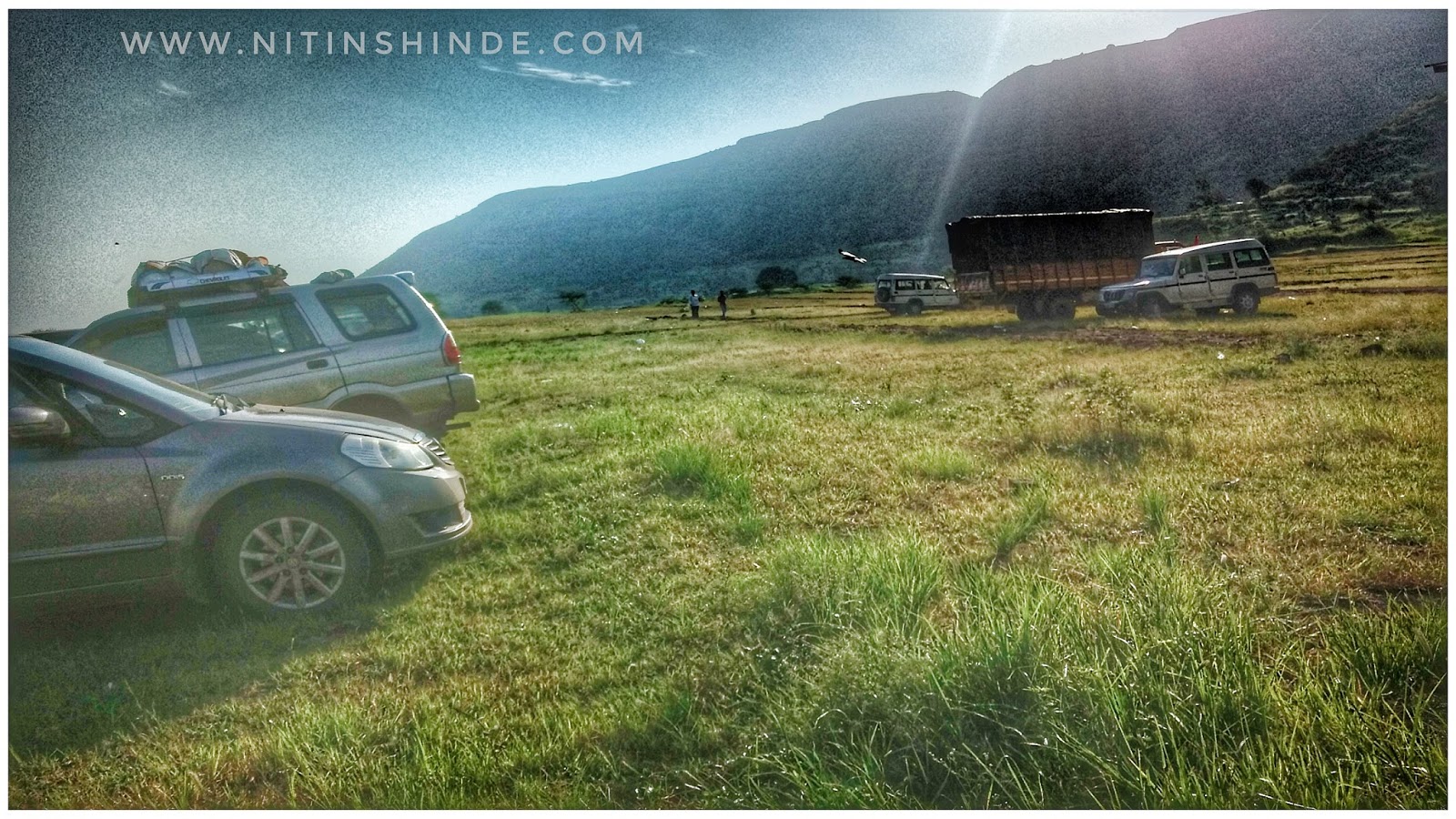Saptashrungi is a site of Hindu pilgrimage situated 60 kilometres from Nashik in the state of Maharashtra in India. 
According to Hindu traditions, the goddess Saptashrungi Nivasini dwells within the seven mountain peaks. (Sapta means seven and shrung means peaks.) It is located in Nanduri, Kalwan taluka, a small village near Nashik in India. Devotees visit this place in large numbers every day.The temple is also known popularly as one of the "three and half Shakti Peethas" of Maharashtra.
The temple is also one among the 51 Shakti Peethas located on the Indian subcontinent and is a location where one of Sati's (first wife of Lord Shiva) limbs, her right arm is reported to have fallen.It is half shaktipeeth among three and half shaktipeeth of Maharashtra.
Saptashrungi is a hill range consisting of seven hills locally called Ghads and form part of the Sahyadri Range of hills in Western Ghats. Sahyadri Range is also known as Ajanta Satmala Range and the average height of the peaks is 4,500 feet (1,400 m).
The Dhodap, in the center of this mountain range, is the highest peak with an elevation of 4,600 feet (1,400 m), and Saptasrungi is towards its west. There are 108 water bodies (ponds) located in the watershed of these hills, which are called Kundas. Nanduri, Kalwan and Vani are the villages nearest to the temple, which are situated at the foot of the hills. There are many approaches to reach the top of the temple location. The route from Nashik and Vani via Dindori is 39 kilometres (24 mi) and via Pimpalgaon Baswant is 51 kilometres (32 mi). The route via Nadurgaon village is the easiest and is 14 kilometres (8.7 mi) from Vani.It is at a distance of 60 kilometres (37 mi) from Nashik, the district headquarters. The State Highway 17 (Maharashtra) (SH-17) connected with the National Highway 3 (NH 3) links Nashik with the temple site near the villages of Vani and Nanduri. Bus facilities by state transportation are available to reach the temple precincts.The forests in the hills are reported to have medicinal herbs.There is a circumlocutory path used by pilgrims to do parikrama around the temple. This path is in an elevation range between 1,230 metres (4,040 ft) and 1,350 metres (4,430 ft), and is stated to be in steep rock topography.The hills are covered with verdant forests.


Saptashrungi Temple is two storied shrine with the Devi enshrined in the top floor. The Devi image is carved in a cave at the base of a sheer scarp rock face.
The Devi is said to be swayambhu (self-manifested) on a rock on the sheer face of a mountain. She is surrounded by seven (sapta in Sanskrit) peaks (shrungain Sanskrit), hence the name: Sapta Shrungi Mata (mother of the seven peaks).
The Devi is decorated with high crown (like a papal tiara), and a gold nose-ring and gold necklaces which are the ornaments used every day. Her attire is in the form of a robe with a blouse, which are changed with new dresses every day. Before she is dressed for worship she is religiously given a formal abhisheka or bath; warm water is reported to be used for two days in a week. The courtyard in front of the temple has a trident or Trishula decorated with bells and lamps. There are other precious ornaments of the goddess which are normally kept at Vani in safe custody but are used to decorate the deity on special festival days. The Devi's image is painted bright red with ochre called sindoor, which is considered auspicious in this region; however, the eyes are not touched by the colour but are made of white porcelain, which shine very brightly.
A portico like structure, an addition made to the main shrine of the goddess are attributed to the Satara Commander-in-Chief and the plain structure at the beginning of the last century. Subsequent additions were made by the Chief of Vinchur.
The temple has undergone renovations recently also with creations of many facilities. The facilities created at the shrine consist of over 500 steps cut into the rock slopes of the hill, from above the road point, leading to the temple entrance, a community hall, a gallery for devotees to form queues and have orderly darshan of the goddess.[8] The steps were built by Umabai Dabhade in 1710 AD. The steps are also seen with figures of Rama, Hanuman, Radha and Krishna, Dattatreya, and of tortoise at a few places on many temples dedicated to Durga or Mata
It is believed that the Devi Mahatmya, a sacred book which extols the greatness of Devi and her exploits, was composed at this place by the sage Markandeya. He performed rigorous penance on a hill opposite the one where the Devi resides; it is now named after him.
It is said that there is one flag which is said to be hoisted at the top of the mountain where Saptashrungi Devi's temple is situated. It is said that the headman of the village of Burigaon climbs up the hill on Full Moon day in the month of April. On that day, at sunrise in the morning he hoists a flag. The path which he used to climb up and down is kept a secret. It is also said that any person who tries to know this route will lose his eyesight.
During the descent from the temple complex there is a cave on the Mahonidri Mountain, which according to the local myth is from where the goddess Saptashhringi, after defeating the demons, disappeared.




















Comments
Post a Comment